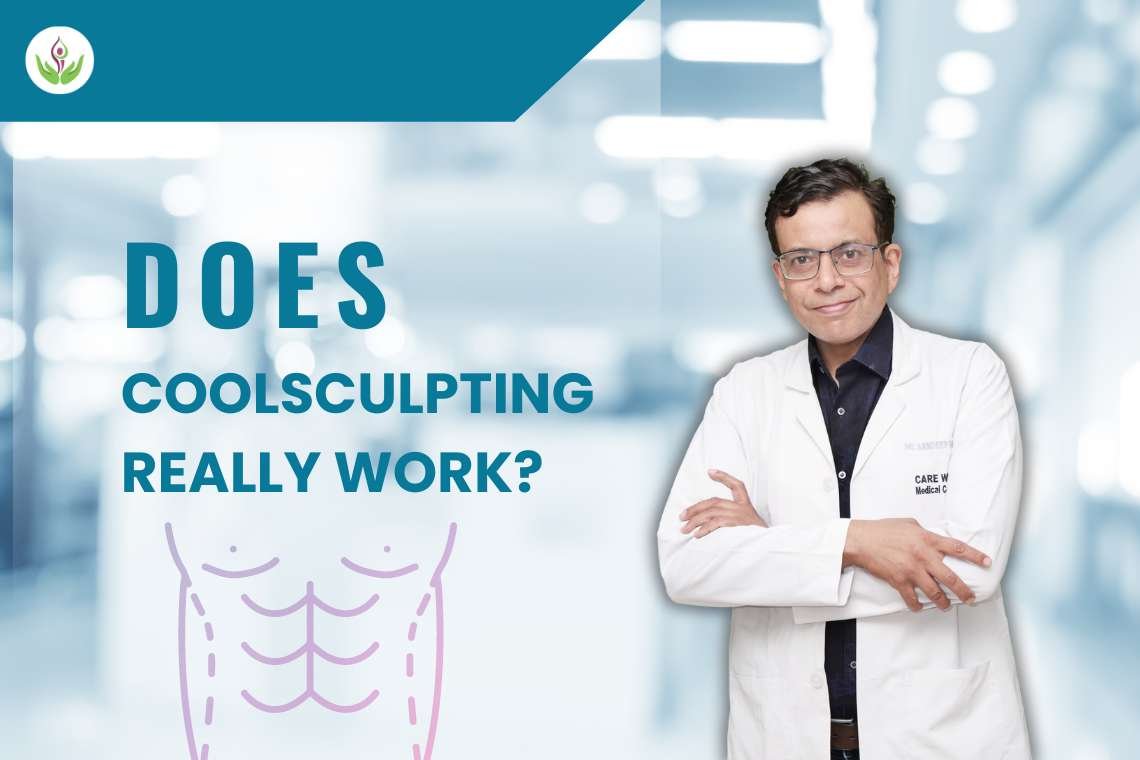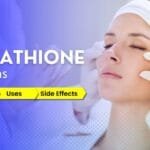Introduction to CoolSculpting
CoolSculpting has become more common as a way to get rid of stubborn fat in different parts of the body without surgery. But does CoolSculpting really work as promised? This fat-freezing treatment has emerged as a promising solution for those seeking a toned body, providing fat loss without the need for surgery or intense workouts. However, amidst the stunning before-and-after photos and celebrity endorsements, some still question its effectiveness. Do the claims about CoolSculpting hold true, or is it merely a gimmick in the realm of body-sculpting dreams?
To find our way through this maze of contradictory data, we need to look beyond glossy magazine spreads and statements from influential people. The goal of this in-depth study is to shed light on the science behind CoolSculpting, as well as its benefits and drawbacks, as well as its fitness for different people.
Understanding How CoolSculpting Works
Cryolipolysis, which is another name for CoolSculpting, freezes fat cells until they break apart without hurting the nearby tissues. The specific fat cells turn into crystals and then die, slowly lowering the amount of fat in the treated area.
The Icy Science of Fat Freezing:
CoolSculpting, which is also called cryolipolysis treatment, works by using an interesting scientific idea. Fat cells are more sensitive to cold temperatures than other cells in the body. When fat cells are cooled down under controlled conditions, they go through a process called apoptosis, which means they die. A brush is used to treat the area in question. It cools the fat below to a specific temperature without hurting the tissues around it. The treated area’s diameter will go down over the next few weeks and months as the body naturally gets rid of the dead fat cells.
Effectiveness: Fact or Fiction?
Yes, clinical tests have shown that CoolSculpting does work. On average, treated areas see their fat thickness drop by 20 to 25 percent. The important thing to remember is that coolsculpting is not a magic bullet for weight loss. It works best for people who are close to their ideal weight and want to get rid of stubborn fat in places like the stomach, sides, love handles, and inner thighs. Not seeing big changes or thinking of it as an alternative to a healthy diet and exercise will only lead to sadness.
The Spectrum of Suitability:
Some people aren’t good candidates for CoolSculpting. People with certain illnesses, like Raynaud’s disease or cryoglobulinemia, are told not to do it because it could go wrong. CoolSculpting also doesn’t help with cellulite or loose skin because it only targets fat cells and not the flexibility or connective tissue of the skin. You need to have a full consultation with a board-certified dermatologist or plastic surgeon to find out if they can help you and to set realistic goals.
Beyond the Hype: Unveiling the Limitations
Controlled studies show that CoolSculpting works very well, but real-life events can be more complicated. Responses are different for each person, and some may not reach the amount of reduction that was wanted. It can be painful for the process itself, with intense cold, pinching, and tingling feelings. For best results, you may need more than one session, which will add to the cost and time investment. The effects also happen slowly; they may not be fully noticeable for weeks or even months.
Beyond CoolSculpting: Exploring the Frigid Landscape
There are other ways to freeze fat besides CoolSculpting. Other cryolipolysis machines and related procedures, such as body sculpting with radiofrequency or ultrasound energy, work similarly, though they are more or less invasive and successful. It is important to learn about and compare these choices, including the prices and possible side effects, to make an informed decision.
The Verdict: Embracing Reality with Open Eyes:
While CoolSculpting is a valuable tool in the body-sculpting arsenal, it is not a magical solution. Realistic expectations, suitability, and a commitment to a healthy lifestyle are crucial for its effectiveness. When approached with informed awareness, CoolSculpting can be a safe and effective way to refine your physique and boost your confidence. However, remember, the key to sustainable results lies in a holistic approach that prioritizes balanced nutrition and regular exercise. So, before succumbing to the allure of icy promises, remember that true transformation begins from within.
This 2000-word article delves into the science, effectiveness, limitations, and suitability of CoolSculpting, empowering you to make informed decisions about this popular fat-reduction procedure. Remember, knowledge is your ultimate weapon in navigating the often murky world of body sculpting. Choose wisely, prioritize your health, and embrace realistic expectations of your
Efficacy of CoolSculpting: What Research Says
Numerous studies have validated the effectiveness of CoolSculpting in reducing fat in treated areas. Research shows an average fat reduction of around 20–25% in the treated area after a single session, with noticeable results becoming apparent within a few weeks to months.
Benefits of CoolSculpting
- Non-invasive procedure with minimal downtime
- Customizable treatment plans to address specific areas of concern
- Long-lasting results with proper maintenance of a healthy lifestyle
Potential Side Effects and Risks
While CoolSculpting is generally considered safe, some individuals may experience temporary side effects such as redness, swelling, bruising, and numbness in the treated area. Rare complications may include paradoxical adipose hyperplasia or changes in fat thickness.
Safety Concerns: Unmasking the Potential Downside:
CoolSculpting is generally considered safe, but like any procedure, it carries potential side effects. Temporary bruising, swelling, tingling, and numbness in the treated area are common. In rare cases, more serious complications like paradoxical adipose hyperplasia (enlargement of treated fat cells) can occur. Transparency with your practitioner about your medical history and concerns is paramount before embarking on this icy journey.
Suitability for Different Body Types
CoolSculpting is suitable for individuals with localized areas of fat that are resistant to diet and exercise. However, it may not be suitable for individuals with obesity or significant weight-loss goals.
Real-Life Success Stories
Many individuals have reported positive experiences with CoolSculpting, achieving noticeable improvements in body contour and self-confidence. Before-and-after photos and testimonials highlight the procedure’s effectiveness in sculpting various body areas.
Comparing CoolSculpting to Other Fat Reduction Methods
CoolSculpting offers a non-surgical alternative to traditional liposuction, providing comparable results without the risks and recovery associated with invasive surgery. It also distinguishes itself from other non-invasive treatments like laser liposuction or ultrasound fat reduction.
Cost Considerations
The cost of CoolSculpting varies depending on the number of treatment sessions required and the size of the targeted area. While it may represent a significant investment upfront, many individuals find the long-term benefits outweigh the initial expense.
Cost-Effectiveness: Weighing the Value Proposition:
CoolSculpting falls on the pricier end of the fat reduction spectrum. The cost can vary depending on the treated area, the number of sessions required, and the practitioner’s expertise. Carefully weigh the financial investment against your desired outcome and explore more affordable alternatives like diet and exercise, which may yield similar results for some individuals.
Conclusion
CoolSculpting offers a safe and effective solution for reducing stubborn fat deposits and achieving a more contoured physique without surgery. With proper consultation and personalized treatment plans, many individuals have experienced transformative results and enhanced confidence in their appearance. But does CoolSculpting really work for everyone? Results vary based on individual factors, making a professional consultation essential to determine its effectiveness for your body goals.
FAQs About CoolSculpting
Most individuals achieve their desired results after one to three treatment sessions per area.
While some discomfort or sensations of coldness may be experienced during treatment, CoolSculpting is generally well tolerated by patients.
CoolSculpting results are long-lasting, as treated fat cells are permanently eliminated from the body. However, maintaining a healthy lifestyle is crucial to preventing fat accumulation.
While CoolSculpting primarily targets fat reduction, it may have a mild skin-tightening effect in some cases. However, significant skin laxity may require additional treatments, such as radiofrequency or ultrasound therapy.
Individuals with obesity or those seeking significant weight loss should explore other weight management options, as CoolSculpting is best suited for localized fat reduction.
References:
- Dreifuss, S., et al. (2016). Insurance coverage for massive weight loss panniculectomy: A national survey and implications for policy [Abstract].
https://pubmed.ncbi.nlm.nih.gov/26707933/ - Janis, J. E., et al. (2020). Panniculectomy: Practical pearls and pitfalls.
https://journals.lww.com/prsgo/fulltext/2020/08000/panniculectomy__practical_pearls_and_pitfalls.43.aspx - Kalmer, C. L., et al. (2022). Functional panniculectomy vs cosmetic abdominoplasty: Multicenter analysis of risk factors and complications [Abstract].
https://pubmed.ncbi.nlm.nih.gov/35705442/ - Kuruoglu, D., et al. (2021). Abdominal panniculectomy: An analysis of outcomes in 238 consecutive patients over 10 years.
https://www.ncbi.nlm.nih.gov/pmc/articles/PMC8613336/














